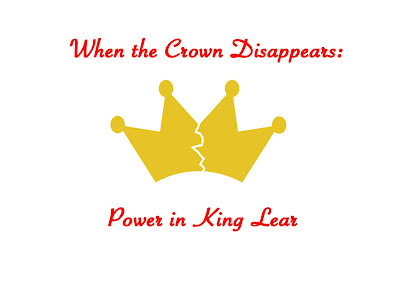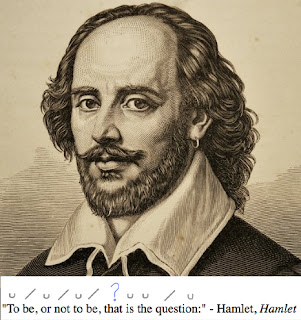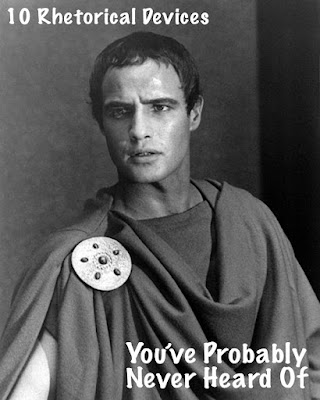When the Crown Disappears: Power in King Lear
The famous King Lear accelerates his own descent into madness by giving away his power too soon. Shakespeare illustrates power with various images throughout the play, most evidently with power's universal symbol: the crown. Let's take a closer look at crown imagery to see what it can tell us about the nature of power in King Lear.
1) The Coronet in Act I, Scene 1
In the first scene of the play, Lear gives his sons-in-law, Albany and Cornwall, a coronet to share. Because he is already unwilling to relinquish his power, Lear purposefully gives his sons-in-law a smaller version of the golden crown he is wearing Unlike Lear's kingdom, a coronet cannot be divided in half without being destroyed, so it is impossible for Albany and Cornwall to share it. An audience would watch Albany and Cornwall struggle over dividing a physical prop, and realize that only one person can wear the coronet.
From the very beginning, we see power and the division of power create tension between Lear, Albany, and Cornwall.
2) The Fool's Crown Joke in Act I, Scene 4
The Fool critiques Lear's decision to give away his power with a clever pun. He claims that if Lear "give[s him] an egg," he will "give [Lear] two crowns." The "crowns" to which the Fool refers are the two halves of an eggshell, after cracking an egg and "eat[ing] up" the yolk. The Fool implies that Lear's crown is as hollow and worthless as empty eggshells.
The Fool adds another layer to his joke with a second pun, when he claims that Lear "hadst little wit in [his] bald crown when [he] gavest [his] golden one away." This time, "crown" refers to Lear's head. The "golden crown" is a metaphor for power: Lear continues to wear his physical crown.
The Fool connects all three meanings of crown to point out that crowns are deceiving. They have no substance inside of them, and do not guarantee the wearer any power. Think of the shape of a crown: a ring will a hollow center.
3) Lear's Crown of Weeds in Act IV, Scene 4
We learn from Cordelia that Lear, in his madness, has taken off his golden crown and "crowned" himself with various plants: "rank fumiter and furrow-weeds, / ... burdocks, hemlock, nettles, cuckoo-flowers, / Darnel and all the idle weeds that grow / In our sustaining corn." All of these plants are invasive or otherwise harmful. Several (burdocks, hemlocks, nettles, and cuckoo-flowers) are poisonous. Others (rank fumiter, furrow-weeds, darnel) grow on ploughed land.
In addition to invading land and pestering farmers, the plants disrupt the very meter of Shakespeare's verse. The list of plants has irregular stresses, "cuckoo-flowers" is too long for its line of verse, and "Darnel" begins its line with a trochaic inversion. In contrast, when Cordelia describes useful, non-toxic plants: "In our sustaining corn," she does so in perfect iambs.
Lear's crown of weeds exposes the true nature of any crown, especially of the golden crown he used to wear: harmful.
4) The Crown of the Imaginary Cliff in Act IV, Scene 6
In his final reference to crowns, Shakespeare describes them as not only useless and harmful, but also invisible and imaginary.
Edgar tricks the blind Gloucester into believing that he is jumping off the "crown" of a cliff to his death. There is no cliff, so there is no crown. Despite the fact that it does not exist, this "crown" still hurts Gloucester, who is miserable after jumping from it because he wanted to die but did not (because the ground beneath him is actually flat).
By the last crown reference in King Lear, we understand that power (like an imaginary crown) is not real, and those who believe in its reality (like Gloucester) expose themselves to harm.




Comments
Post a Comment
All comments are moderated by the Green-Eyed Blogger to avoid spam. If you do not see your comment right away, do not worry; it is simply undergoing our routine moderation process.